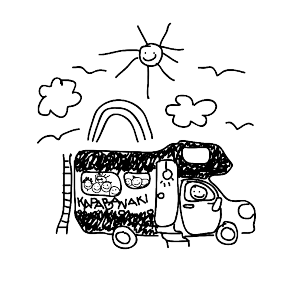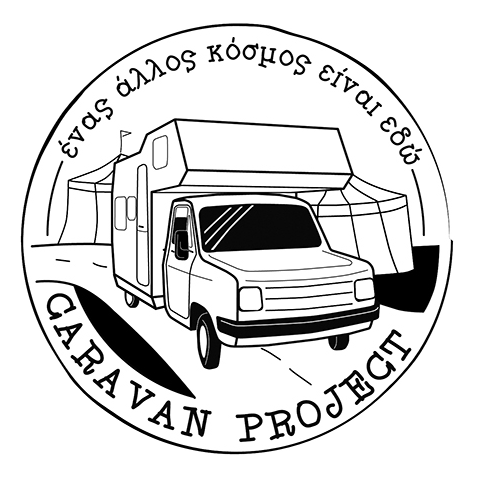When you tell stories to children, you take them to lands beyond the restricted circles of their everyday existence and you offer them unexpected gleams of the possibilities in life they would otherwise never see.
 The Caravan Project’s orientation is mainly educational. We give a special importance in the educational aspect of our work, namely in the use of stories as an educational material of experiential learning. This is not something new though, as narratives have long been having this purpose: to be shared, so people can understand and sense the world which environs them. Contemporary theorists (Fineman, Haynes etc.) admit that the way we organize our life is based on an emotional experience and the utility of stories lies with the activation of emotions motivating human.
The Caravan Project’s orientation is mainly educational. We give a special importance in the educational aspect of our work, namely in the use of stories as an educational material of experiential learning. This is not something new though, as narratives have long been having this purpose: to be shared, so people can understand and sense the world which environs them. Contemporary theorists (Fineman, Haynes etc.) admit that the way we organize our life is based on an emotional experience and the utility of stories lies with the activation of emotions motivating human.
We consider interconnection and the diffusion of our work within the education community to be of a vital importance. In the Caravan Project, we wish to actively implicate students and teachers through the implementation of educational programs, adjusted to the multimedia exhibition which takes place inside the large yurt. Our planning concerns two educational programs of a two-hour duration, one of which is addressed to 5th and 6th grade elementary school students, the other one to middle school (1st, 2nd and 3rd grade) and to high school students (1st and 2nd grade).
Content of programs
The programs move between the duality of image and speech, where image produces speech and speech is imprinted on image. With the Caravan Project’s stories as a vehicle, we aim to provide children, in a pleasant and creative way, with stimuli that can contribute to a global development of their personality and critical thinking. The activities are structured in such a way that they serve cognitive, emotional and psychokinetic purposes. By stimulating the children’s emotion and imaginary, we wish to invite them to become co-creators of the Caravan Project by producing their own micro-stories.
Aim of the programs
In more detail, the programs aim to:
– Familiarize children with the concept of narratives
– Highlight the role of narrative as a source of information for the other
– Develop the observation and the ability to listen to the interlocutor
– Cultivate the spirit of respecting the other
– Develop comparative and critical skills
– Develop spoken and writing fluency
– Increase self-awareness
– Strengthen the student’s multiliteracies
Elementary school students
In the groups for elementary school students, the narration of a human story along with photographic material presentation becomes the vehicle for discussing on the value of individual stories. The search and documentation of primary emotions and thoughts and the definition of basic concepts which narratives discuss, are the starting point which enables the children’s transition from the stage of being a listener-spectator to the stage of being a narrator. Through individual and group storytelling exercises the students are encouraged to interpret thoughts and emotions created by the narratives into mime, still image and design.
Middle school and High school students
The groups of middle school and high school students search for the individuals and the settings of the narratives presented in the exhibition space, they discover unique individuals who chose to form a path of their own and they see into unconventional attitudes to life. From being receivers-spectators they gradually move on to being transmitters-narrators, as they are initially asked to discern inside them the need to tell a personal story and later to narrate stories from their school, village or town and to capture them in their camera. Their work will participate in the students’ film competition entitled “Tell me a story” and will be uploaded in the Caravan Project’s narrative web platform.
The ultimate objective for these programs is that this experience be creatively used in the schooling process, in the subjects of Modern Greek Language and Literature, History, Geography, Social and Political Science, Political Education, Computer Studies and Art and to constitute a motivation for Projects and Programs of Health, Cultural and Environmental Education.

